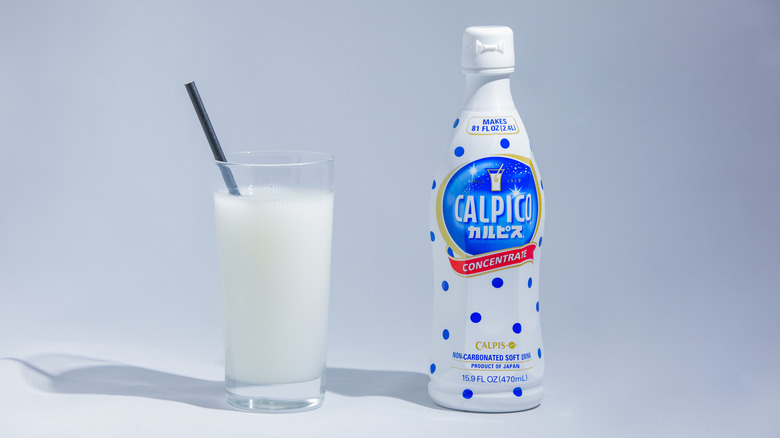The Endearing Meaning Behind Calpico's Polka Dot Label
This cloudy, non-carbonated milk beverage was first made by businessman Kaiun Mishima, who, after some digestive suffering on a trip to inner Mongolia, was rescued and refreshed by a local fermented beverage. Immediately upon returning to Japan, he set about developing a similar brew in his home country (via Asahi Group Holdings). On July 7, 1919, Calpis entered the market as the first Japanese beverage made with lactic acid bacteria and calcium.
The drink can be poured over ice, used to sweeten nightcaps, added to yogurt desserts, and even used as meat tenderizer (via Tsunagu Japan). The name is derived from "cal," referring to calcium, and "pis," an offshoot of the Sanskrit word "salpis," which references the taste of fermented milk, as well as the five tastes found in Buddhism. The drink can be purchased in both concentrated versions and diluted, ready-to-drink beverages flavored with an assortment of fruits (per Zen Market). Along with an interesting origin story, the drink's label carries significance.
A label written in the stars
According to Calpico, those blue, playful polka dots decorating the labels of Calpico bottles are meant to represent the stars of the Milky Way galaxy and celebrate Tanabata, the Japanese festival of the stars. Legend recounts a meeting between two lovers who were otherwise separated and were only able to unite on this particular day; their meeting is celebrated annually on the seventh day of the seventh month (per Japan Guide).
During this festival season, participants write wishes on pieces of paper and tie them into bamboo branches (via Globe Trottin' Kids). The atmosphere is bright and colorful, with paper streamers decorating homes and streets. According to Live Japan, the Japanese characters for Tanabata can be translated into "Evening of the Seventh," referencing the lucky seventh day of the lovers' meeting — and the date of Mishima's introduction of the milky Calpico to the world.

